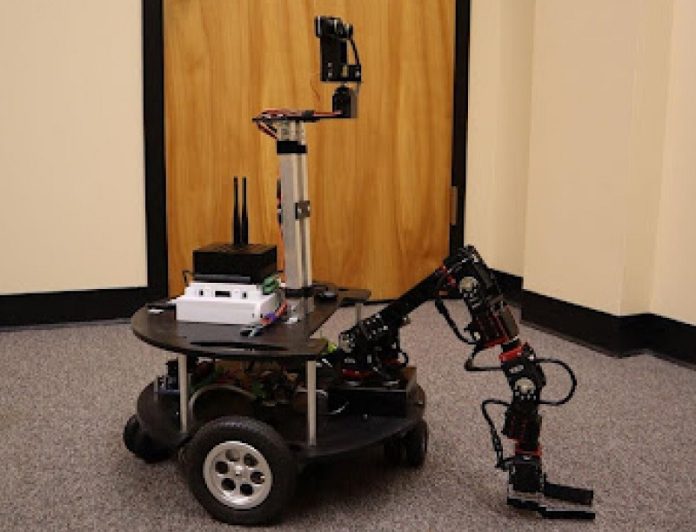
Someday, robots might crawl across the moon helping astronauts build science labs and even future homes—and some of the early work to make that happen is taking place in an ordinary office at the University of Colorado Boulder.
There, a small, three-wheeled robot named Armstrong rolls around picking up and moving plastic blocks.
It might not look like much, but this robot and the students working with it are laying the foundation for a new era of space exploration.
Armstrong is operated remotely by students wearing virtual reality (VR) headsets. One of them is Xavier O’Keefe, a recent CU Boulder graduate and now a master’s student in aerospace engineering.
From a nearby room, he uses VR goggles to see through a camera mounted on the robot and guide it around the office. The idea is to train people on Earth to operate robots in environments that are far more dangerous—like the moon.
In their recent study, published in Advances in Space Research, O’Keefe and his teammates showed that training with VR in a “digital twin”—a virtual copy of the real world—can help people control robots more quickly and with less stress.
This concept is a big deal for future moon missions, which will rely heavily on both astronauts and robotic helpers. The work is part of a larger project led by astrophysicist Jack Burns and his team at CU Boulder.
Burns’ group is working on plans for a huge observatory on the moon called FarView. It would use 100,000 antennas spread out across 77 square miles of lunar surface to study the universe.
But setting something like that up by hand would take a lot of time and effort—so the idea is to use robots like Armstrong to help do the job.
To prepare, the team built a virtual replica of their office using the Unity video game engine. They carefully matched every detail, from the walls and carpet to how fast Armstrong moves. They even timed how long it took the robot to roll one yard in real life and matched that speed in the virtual version.
In their experiment, 24 people tried to complete a simple task: use Armstrong to pick up a plastic block and move it.
Half of them practiced in the virtual world first. Those who did the VR training completed the task about 28% faster and said they felt more relaxed while doing it. The results show that virtual training could be a valuable tool for preparing people to work with robots in challenging environments like the moon.
This hands-on research gave the student team valuable real-world experience. For example, they had to redesign their experiment when they realized many participants accidentally flipped the blocks upside down—something they hadn’t expected. It was a lesson in how people interact with machines in unpredictable ways.
Now the team is taking their digital twin idea to the next level by simulating the moon’s actual surface, including tricky elements like lunar dust. The dust, kicked up by rover wheels, could block cameras and sensors, but it’s hard to model because no one can study it firsthand on Earth.
Still, students like O’Keefe are excited to be part of the journey. Even if it’s just a robot rolling around an office, their work is helping bring humans and machines one step closer to exploring the moon—together.
Source: University of Colorado at Boulder.



